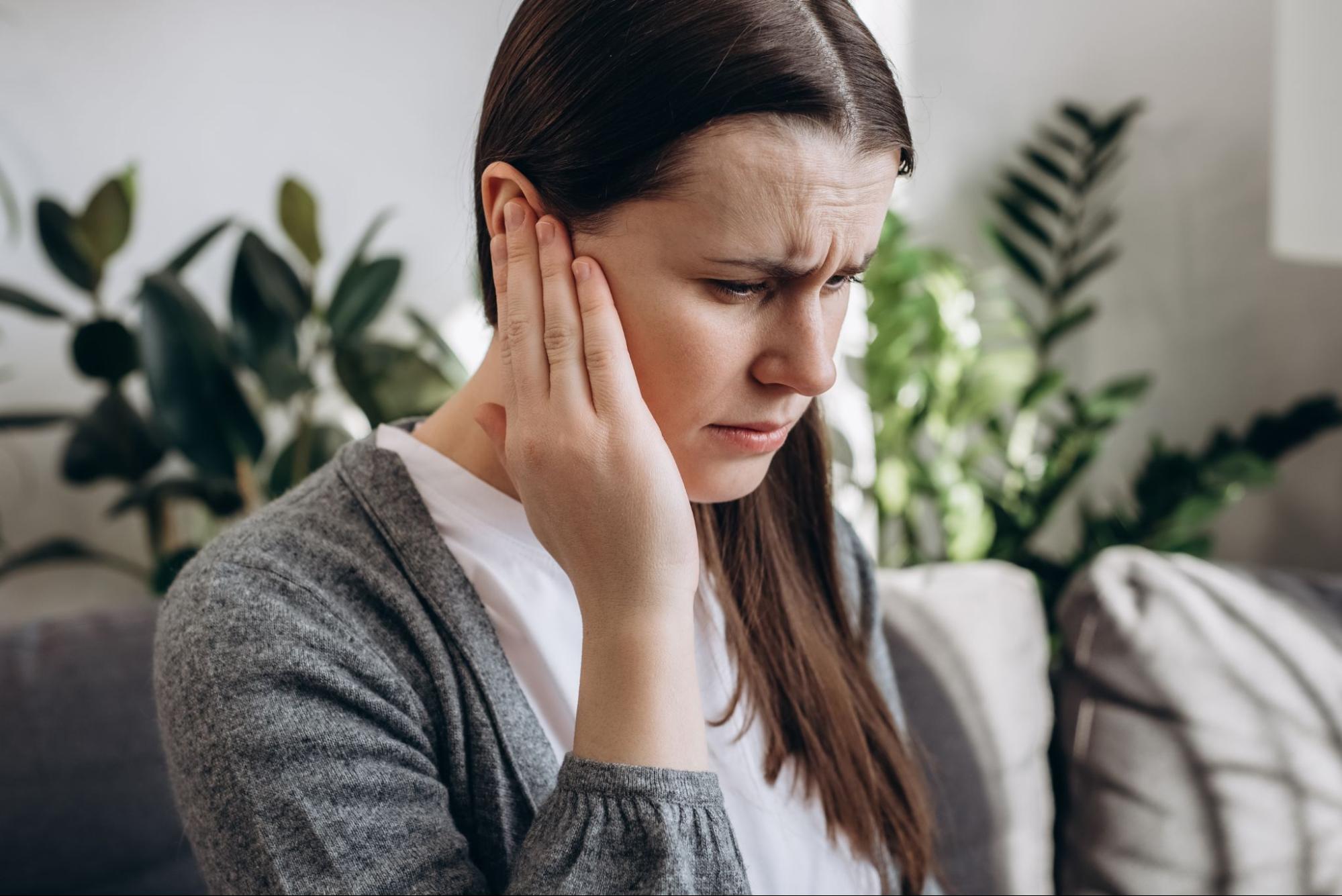55 Hearing Loss Statistics for 2025
Discover hearing loss statistics for 2025, including global and national trends, average hearing loss by age and other demographics, and key risk factors.

Hearing loss is more common than many people realize, affecting over 1 billion people worldwide, including 50 million Americans. It can begin at any age, from birth to late adulthood. For adults who experience hearing loss later in life, the impact goes beyond communication—with broader health issues like diabetes, cardiovascular disease, depression, and cognitive decline.
At Nagish, we’ve compiled up-to-date hearing loss statistics for 2025 using data from leading global sources like the CDC, World Health Organization (WHO), JAMA Network, and the National Institute for Deafness and Other Communication Disorders (NIDCD).
These hearing loss statistics offer a comprehensive look at the epidemiology of hearing loss—its causes, prevalence, and wide-reaching impact. Whether you’re looking to understand the average hearing loss by age or track public health trends, these stats offer valuable insight into one of the world’s most overlooked health challenges.
If you or someone you care about is navigating hearing difficulties, Nagish’s phone call captioning app can be a helpful tool for improving everyday communication and staying connected.
Let’s get started.
Prevalence of Hearing Loss
- Globally, 1.5 billion people have hearing loss (greater than 20 decibels in the better-hearing ear), and this number is expected to reach 2.5 billion by 2050.
(source) - Approximately 430 million people worldwide have disabling hearing loss (greater than 35 decibels) that requires rehabilitation services. Hearing loss prevalence is expected to increase to 700 million by 2050. (source)
- About 50 million people in the U.S. live with some degree of hearing loss. (source)
- Hearing loss is the third most prevalent chronic physical condition in America, after high blood pressure and arthritis, affecting roughly 1 in 7 individuals nationwide. (source)
Average Hearing Loss by Age, Race, and Other Demographics
Age
- About 50% of adults over age 75 live with disabling hearing loss. (source)
- Approximately one third of older adults between 65 and 74 have hearing loss. (source)
- Of U.S. adults aged 20 to 69, 14% have difficulty hearing normal speech frequencies. (source)
- That percentage increases among Americans aged 60 to 69, with nearly 4 in 10 (39.3%) having trouble hearing normal speech frequencies. (source)
- Out of every 1,000 children born in America, 2 to 3 children have hearing loss detectable by a hearing screening. (source)
Gender
- While age-related hearing loss typically causes difficulty in hearing at higher frequencies, women are more likely to have difficulty hearing at lower frequencies as they age. (source)
- Hearing loss statistics show that among adults aged 20-69, men are almost twice as likely as women to experience loss of hearing. (source)
- Among Americans in their 50s, men are three times more likely than women to experience hearing loss. But rates become similar as people get older. (source)
Race and Ethnicity
- Across all racial and ethnic groups in the U.S., non-Hispanic white adults are the most likely to have hearing loss. (source)
- Among Americans in the 20 to 69 age group, non-Hispanic Black adults are the least likely racial or ethnic group to experience hearing loss. (source)
Income Level
- Close to 80% of people with disabling hearing loss live in countries with middle-range income or lower. (source)
- About 65% of lower income Americans on Medicare age 71 or older have some loss of hearing, and that percentage increases to about 96% by age 90. (source)
- Approximately 45% of people on Medicare report difficulty hearing even while wearing a hearing aid. (source)
- Hearing loss among children is most common in low-income and lower-middle-income regions. (source)
- Countries with lower development levels had higher rates of hearing loss and disability, with a strong negative correlation. (source)
Hearing Loss Statistics - Babies and Children
- About 96% of deaf babies are born to hearing parents. (source)
- There are 97.8 million children and teens living with hearing loss worldwide, representing a total of 3.91 million years lived with disability (YLDs). (source)
- Globally, there are approximately 34 million deaf children. (source)
- The rate of hearing loss rose slightly from 3,537 to 3,711 per 100,000 children and teens between 1990 and 2021, for an average yearly increase of 0.15%. (source)
- Mild hearing loss represented the majority of all childhood and adolescent cases at 62.1%. (source)
- Middle ear infections (otitis media) are the leading preventable cause, responsible for 46.9% of hearing loss cases among children and teens. (source)
Hearing Loss Statistics - In the Workforce
- About 12% of people in the workforce have hearing loss. (source)
- Roughly 4% of American workers have both hearing loss and tinnitus. (source)
- Among noise-exposed workers, 20% have a material hearing impairment, meaning their loss of hearing affects daily activities. (source)
- Each year, about 22 million workers are exposed to hazardous noise levels in the workplace. (source)
- Only 47% of workers exposed to loud noise report wearing hearing protection. (source)
- Workers with loss of hearing are more likely to be injured in the workplace, as they may not respond to warning sounds from smoke detectors, vehicles, forklifts, and other machinery. (source)
- Pregnant workers in noisy environments can risk their baby’s hearing and experience increased stress levels, which can affect the baby’s development. (source)
Hearing Loss Statistics - Causes and Risk Factors
- Genetics are the cause of hearing loss in roughly 50% of cases. The rest are caused after birth by infections, injuries, loud noise, or certain medications. (source)
- Among genetic cases, 30% are part of a larger medical condition (a syndrome) while 70% happen without other health conditions present (called non-syndromic). (source)
- In non-syndromic genetic hearing loss, 75-80% of cases are inherited from both parents and 20% are passed down from one parent. The remaining cases are caused by less common inheritance types. (source)
- Approximately 12.5% of American children and teens aged 6-19 have permanent noise-induced hearing loss, compared to 17% of adults aged 20-69. (source)
- Globally, “unsafe listening practices” has put more than 1 billion young people aged 12 to 35 at risk of permanent hearing loss. (source)
- Hearing loss statistics reveal occupational exposure results in 25% of cases among American workers. (source)
- Among American adults aged 20-69, 18% of those exposed to very loud noise at work for 5 years or more had difficulty hearing normal speech frequencies—compared to 5.5% of adults who weren’t. (source)
- Approximately 13 million American workers have elevated risk of exposure to ototoxic chemicals, which can cause hearing loss. (source)
- In children under 5 years of age, otitis media is responsible for 68.7% of hearing loss cases. (source)
- About 14% of children born with congenital CMV (a common virus passed from mother to baby during pregnancy) develop some form of hearing loss. Around 3-5% develop more serious hearing loss in both ears. (source)
- Of all children who have moderate to severe hearing loss in both ears, an estimated 15–20% of those cases are caused by congenital CMV. (source)
Hearing Loss Statistics - Care and Prevention
- In July 2022, the number of cochlear implants received globally reached 1 million. (source)
- Around 29 million U.S. adults could benefit from hearing aids—but only 16% of people aged 20 to 69 who could be helped by them use them. (source)
- Fewer than 1 in 3 adults (30%) aged 70 and older who could benefit from hearing aids have ever worn them.
- Among adults aged 20 to 69, the number is even lower—only about 1 in 6 (16%) has ever used hearing aids, even though they could improve their hearing. (source)
- Hearing aid use among Americans aged 70 and older who are hard of hearing increased 23.3% over a 7-year period. However, the percentage did not increase among people living below the poverty line. (source)
- Among American adults who reported hearing loss, only 46% had mentioned it to their doctor in the past 5 years. (source)
- Only 7% of low-income Americans who reported hearing loss have visited an audiologist, while that percentage was double for those with high incomes. (source)
- Public health measures like immunization, improved care for mothers and newborns, and proper management of ear infections can prevent 60% of hearing loss worldwide. (source)
Hearing Loss Statistics - Global and Individual Effects
- Even mild hearing loss can affect a school-age child’s learning, causing them to miss up to 50% of classroom discussion, and undetected hearing loss can delay language and speech development. (source)
- Untreated hearing loss leads to significant costs to the global economy—approximately $980 billion each year. (source)
- Roughly 18% of adults aged 20 to 69 with moderate to profound hearing loss have depression, compared to 8% of adults in that same age range among the general population. (source)
- Approximately 28% of people aged 52 and older with moderate to severe hearing loss have difficulty completing daily tasks, compared to 7.3% of people in that age group in the general population. (source)
What These Hearing Loss Statistics Reveal
These hearing loss statistics don’t just paint a picture—they spotlight a growing global health issue that we have the power to address. Hearing loss may impact daily life, productivity, and well-being—but with the right awareness and tools, we can take meaningful steps forward.Here’s what we can take away:
- Hearing loss is extremely common, with 1 in 7 Americans and 1.5 billion people worldwide below normal hearing thresholds.
- The risk increases significantly with age, especially after 60—but children and teens are also affected, especially in low-income regions.
- Men are more likely than women to develop hearing loss before age 70.
- Race, income, and geographic location all influence hearing health and access to care.
- Noise exposure remains a leading cause, especially in workplaces and among young people using headphones at unsafe volumes.
- Preventable infections like otitis media cause most hearing loss in children under 5.
- Access to hearing health care is unequal—millions who need hearing aids don’t have them, especially in lower-income households.
- Untreated hearing loss carries serious consequences, including depression, social isolation, learning challenges, and reduced quality of life.
By raising awareness and supporting early detection, safer environments, and better access to care, we can reduce the global impact of hearing loss—for good.
How Nagish Can Help
At Nagish, we believe communication should be accessible to everyone. That’s why we’ve developed a suite of AI-powered tools designed to break down barriers and support people with hearing loss in everyday conversations.
With real-time, natural-feeling transcription, Nagish helps you stay connected—whether you're at work, in school, or catching up with friends. It’s not about adapting to a world that doesn’t always accommodate you; it’s about using technology that empowers you to fully engage.
Ready to experience the difference? Download Nagish and try it for yourself. If you have questions or need help getting started, we’re here to support you every step of the way—contact us anytime.













